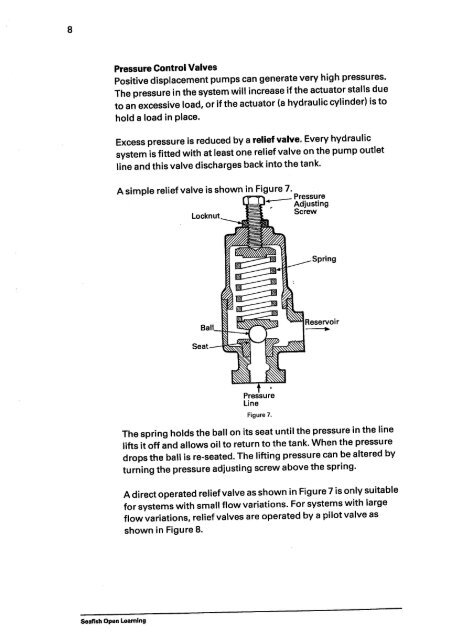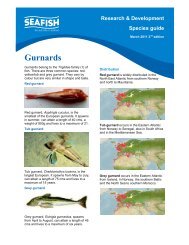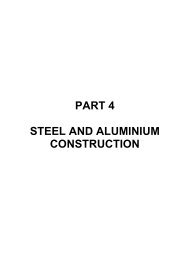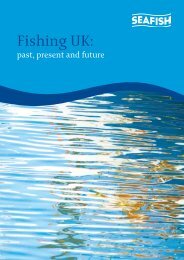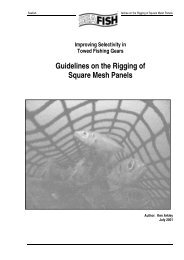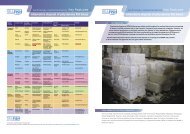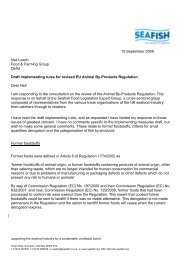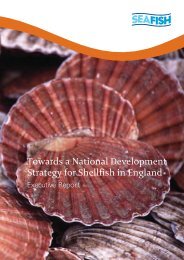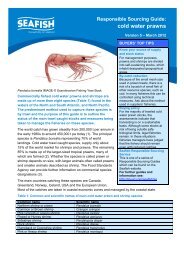Hydraulics - Seafish
Hydraulics - Seafish
Hydraulics - Seafish
You also want an ePaper? Increase the reach of your titles
YUMPU automatically turns print PDFs into web optimized ePapers that Google loves.
8<br />
Pressure Control Valves<br />
Positive displacement pumps can generate very high pressures.<br />
The pressure in the system will increase if the actuator stalls due<br />
to an excessive load, or if the actuator (a hydraulic cylinder) is to<br />
hold a load in place.<br />
Excess pressure is reduced by a relief valve. Every hydraulic<br />
system is fitted with at least one relief valve on the pump outlet<br />
line and this valve discharges back into the tank.<br />
A simple relief valve is shown in Figure 7.<br />
Locknut<br />
Pressure<br />
Adjusting<br />
Screw<br />
Spring<br />
Reservoir<br />
Pressure<br />
Line<br />
Figure 7.<br />
The spring holds the ball on its seat until the pressure in the line<br />
lifts it off and allows oil to return to the tank. When the pressure<br />
drops the ball is re-seated. The lifting pressure can be altered by<br />
turning the pressure adjusting screw above the spring.<br />
A direct operated relief valve as shown in Figure 7 is only suitable<br />
for systems with small flow variations. For systems with large<br />
flow variations, relief valves are operated by a pilot valve as<br />
shown in Figure 8.<br />
<strong>Seafish</strong> Open Learning


